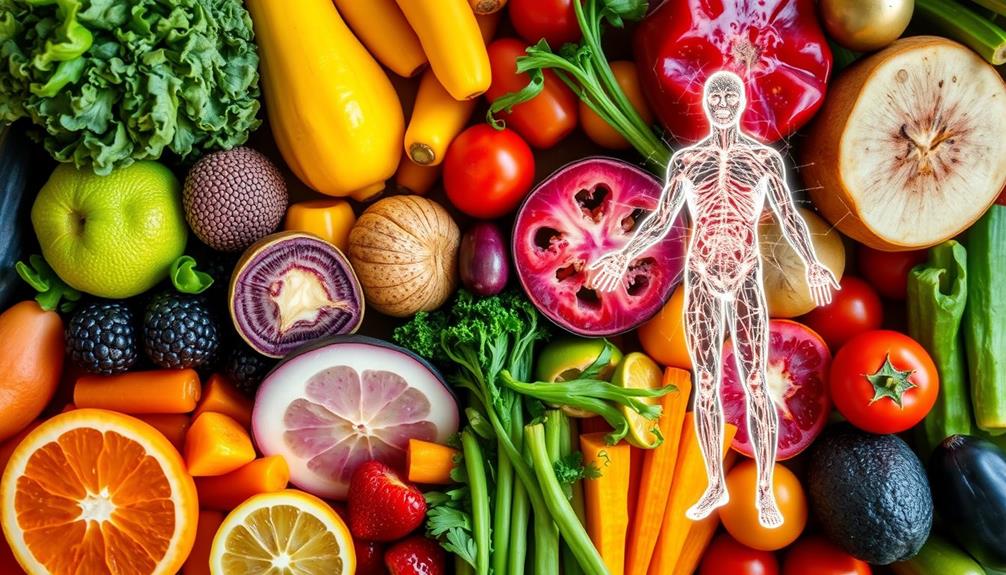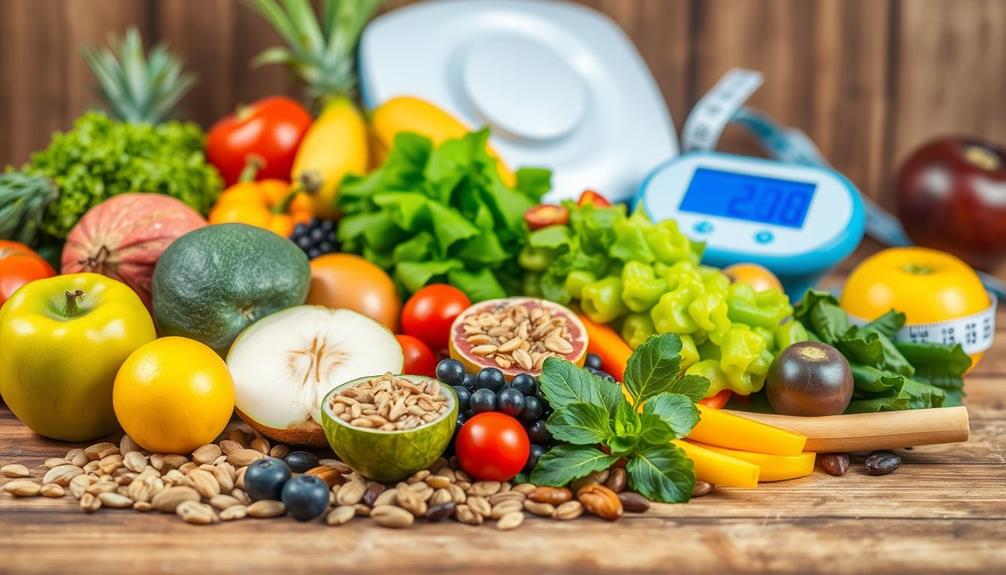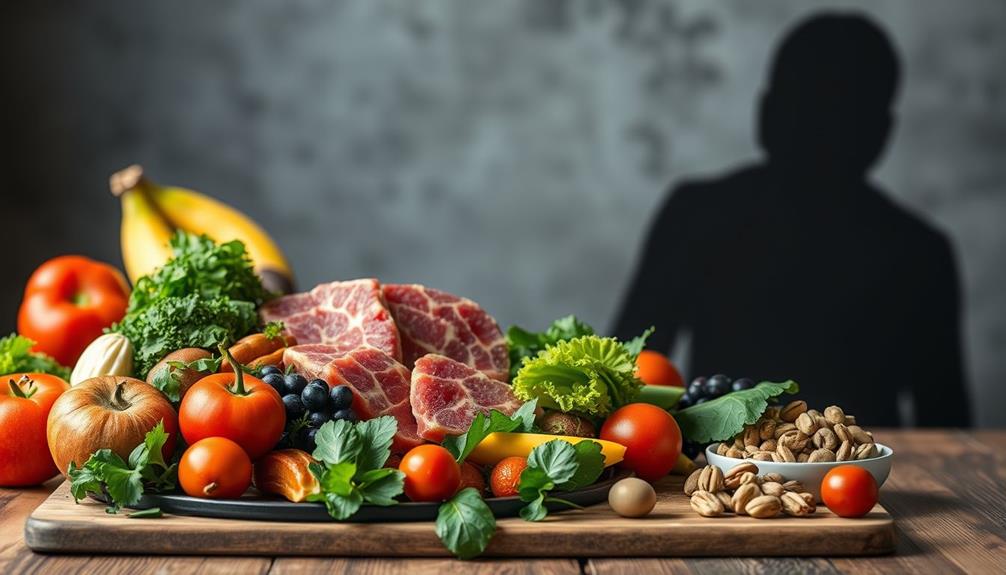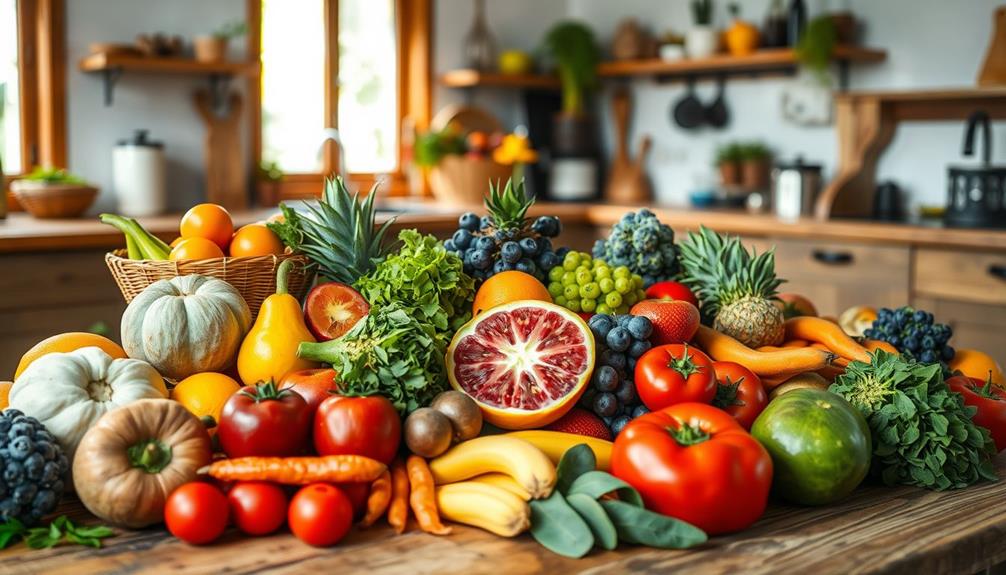When comparing raw food to cooked food, both have unique health benefits. Raw foods retain essential nutrients like vitamin C and certain antioxidants, aiding your digestion and providing anti-cancer properties. However, cooking enhances the bioavailability of other nutrients, like lycopene in tomatoes and beta-carotene in carrots, making them easier for your body to absorb. While raw diets can be nutritious, they also come with risks, like potential foodborne illnesses. A balanced approach that includes both raw and cooked foods often maximizes health benefits. You might find it interesting to explore which foods are best eaten raw and cooked. When it comes to cooked food benefits, the process of cooking can also help to kill harmful bacteria and parasites, reducing the risk of food poisoning. Cooking can also make certain foods easier to chew and digest, especially for individuals with sensitivities or digestive issues. Additionally, the act of cooking can also make food more flavorful, which can encourage people to consume a wider variety of nutritious foods. Combining both raw and cooked foods in your diet can provide a well-rounded approach to nutrition and maximize the benefits of both.
Key Takeaways
- Cooking enhances nutrient bioavailability, improving absorption of lycopene, beta-carotene, and antioxidants in various foods.
- Raw foods retain higher levels of vitamin C and certain anti-cancer compounds, promoting health benefits.
- Cooking kills harmful bacteria and reduces natural toxins in some raw foods, improving safety.
- Different cooking methods affect nutrient retention; steaming and microwaving are ideal for preserving vitamins.
- A balanced diet of both raw and cooked foods maximizes nutrition and health benefits.
Nutritional Benefits of Cooking
Cooking offers considerable nutritional benefits that enhance the value of many foods you consume. When you cook foods, like tomatoes, the lycopene content increases by about 35% after just 30 minutes at 190.4°F (88°C). This means that cooked foods can provide more antioxidants compared to their raw counterparts.
Cooking also breaks down tough fibers, making it easier for your body to digest and absorb nutrients, especially from grains and legumes that might harbor anti-nutrients when raw. Additionally, certain cooking methods can help preserve the beneficial nutrients found in celery juice, ensuring that you receive maximum health benefits from your meals.
Certain cooking methods, such as steaming or microwaving, effectively preserve heat-sensitive vitamins, while boiling can deplete water-soluble vitamins like vitamin C and B vitamins by 50-60%. Notably, cooking carrots boosts their beta-carotene levels, enhancing their nutritional profile considerably compared to raw carrots.
Incorporating a variety of cooking methods into your meal prep can maximize the nutrient content of your meals. So, while raw foods have their place, don't underestimate the power of cooking to reveal the full potential of many ingredients you enjoy.
Advantages of Raw Foods
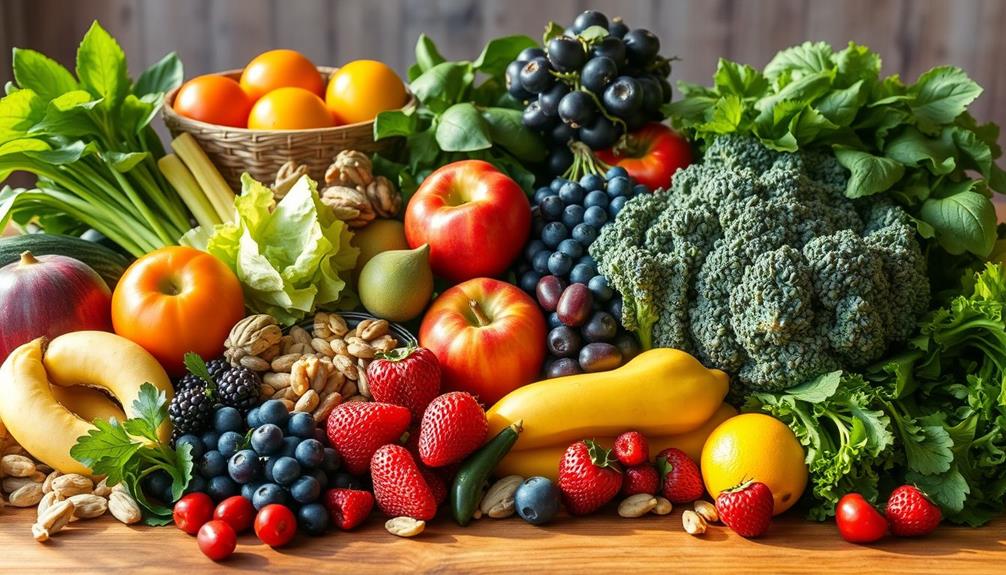
While cooked foods offer significant nutritional advantages, raw foods come with their own unique benefits that shouldn't be overlooked. By incorporating more raw foods into your diet, you can enjoy a variety of health perks: For example, raw foods are often easier for the body to digest, as they contain natural enzymes that can aid in the digestion process. Additionally, raw foods are often higher in certain nutrients, such as vitamin C and folate, which can be lost during the cooking process. This can help to boost your immune system and overall health. Therefore, incorporating a variety of raw foods into your diet can provide a well-rounded nutritional benefit, especially in terms of raw food digestion.
- Higher Nutrient Retention: Raw foods retain essential nutrients like vitamin C and B vitamins, which can diminish through cooking. This is further enhanced by the benefits of raw food, which promotes better nutrient absorption.
- Anti-Cancer Properties: For instance, raw broccoli contains three times more sulforaphane than cooked, preserving the anti-cancer enzyme myrosinase.
- Heart Health Support: Raw onions serve as anti-platelet agents, thanks to their high antioxidant levels, which cooking can reduce.
- Improved Digestion: A raw food diet, consisting of at least 70% raw foods, helps maintain natural enzymes that aid digestion and nutrient absorption.
Embracing raw foods can enhance your overall health by maximizing your intake of important nutrients while providing anti-cancer benefits.
By focusing on a raw food diet, you're not only nourishing your body, but you're also promoting better digestion and supporting heart health.
Safety and Health Risks
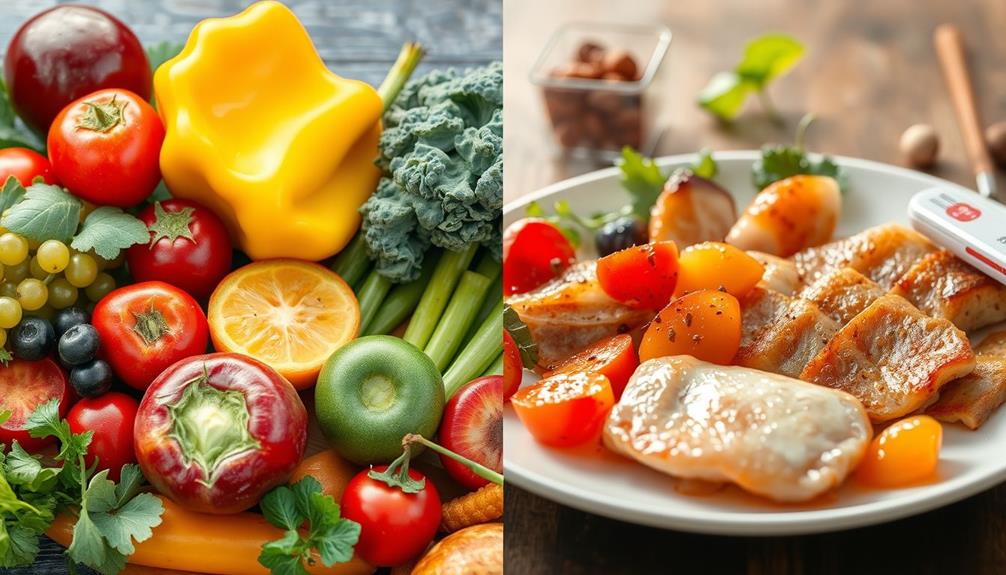
When it comes to food safety, understanding the risks associated with raw foods is essential. While raw fruits and vegetables are generally safe, certain items like spinach and sprouts are often linked to contamination risks. Cooking, on the other hand, effectively kills harmful bacteria and pathogens found in raw meats, fish, and poultry, greatly reducing the risk of foodborne illnesses like E. coli and Salmonella.
Here's a quick comparison of safety risks:
| Food Type | Safety Concerns |
|---|---|
| Raw Foods | Contamination, natural toxins |
| Cooked Foods | Reduced risk of foodborne illnesses |
It's important to remember that some raw foods contain natural toxins that can be harmful if not properly cooked. Cooking methods like boiling or steaming can help maintain vegetable safety while preserving valuable nutrients. A balanced diet incorporating both raw and cooked foods maximizes health benefits, ensuring you enjoy the advantages of both while mitigating health risks. Prioritizing food safety should be a key consideration in your meal preparation to promote overall well-being.
Nutrient Loss During Cooking

Understanding food safety leads naturally to the discussion of nutrient loss during cooking. Cooking can notably impact the nutritional quality of your meals, especially concerning water-soluble vitamins. Here are some key points to reflect on:
- Vitamin Loss: Boiling can reduce vitamin C and B vitamins by 50-60%. Additionally, the selection of cooking methods can play an essential role in nutrient preservation, as highlighted in cold medications overview.
- Heat Sensitivity: Cooking tomatoes for half an hour may decrease vitamin C levels by up to 29%.
- Bioavailability: Curiously, cooking can enhance nutrient absorption. For example, lycopene in tomatoes becomes more accessible when cooked.
- Nutrient Retention: Fat-soluble vitamins D, E, and K remain largely unaffected by cooking, showing that some nutrients do survive the heat.
Different cooking methods can also influence nutrient retention. Steaming and microwaving tend to preserve antioxidants better than frying or boiling.
While cooking can lead to nutrient loss, it can also make certain nutrients more available. Balancing your cooking methods and understanding how they affect nutrient levels can help you make healthier choices.
Always keep in mind the trade-offs between cooking and raw food to optimize your diet.
Cooking Techniques for Retention
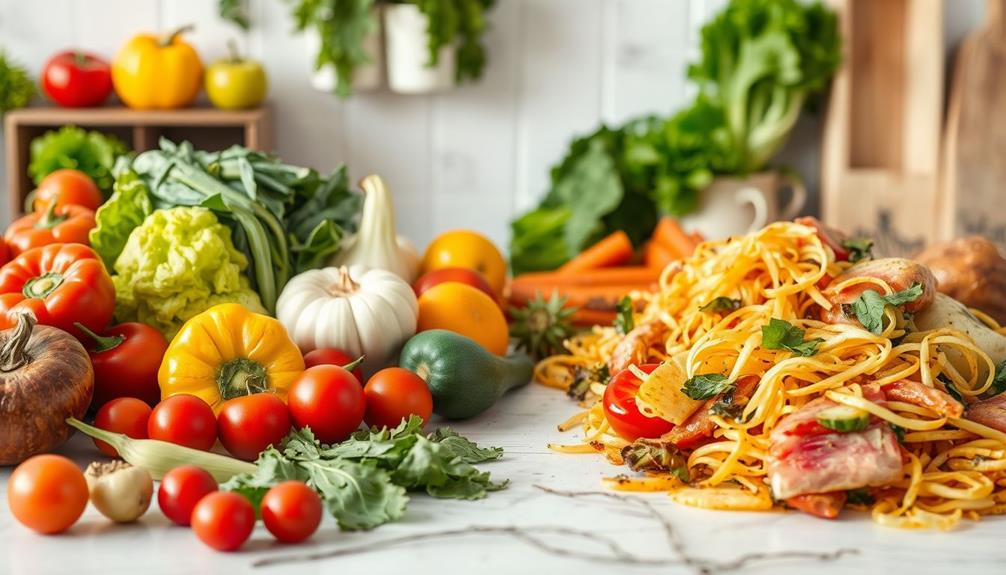
Choosing the right cooking techniques can greatly impact nutrient retention in your meals. Steaming is one of the best cooking methods for retaining heat-sensitive vitamins, preserving up to 80% of vitamin C. In contrast, boiling can reduce vitamin C levels by 50-60%.
Moreover, incorporating fresh herbs and vital oils, such as eucalyptus oil for its decongestant effects, can add flavor and potential health benefits to your dishes. If you're looking to retain nutrients, consider microwaving your vegetables; this technique typically requires shorter cooking times and minimal water, which helps keep nutrients intact.
While boiling excels at preserving carotenoids, it's crucial to avoid overcooking, as this can destroy sensitive nutrients like vitamin C and polyphenols. Light cooking methods that maintain some crunch in your vegetables are preferable.
Remember, frying can deplete antioxidant levels in both oil and vegetables, so it may not be the best option for nutrient retention. Additionally, using herbs and spices instead of salt and sugar can enhance flavor and contribute additional health benefits without compromising nutrient retention.
Foods Best Eaten Raw
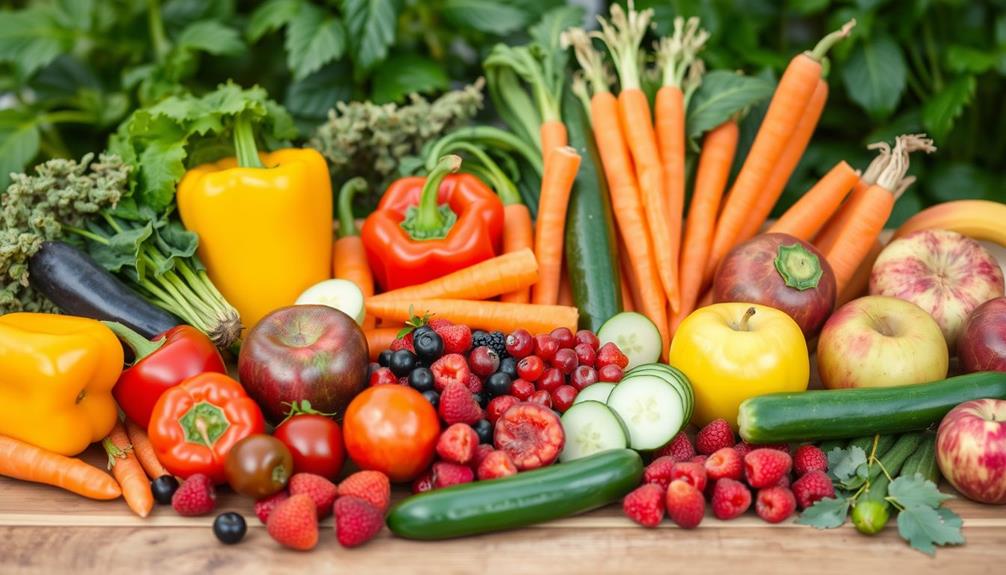
Many health enthusiasts advocate for incorporating raw foods into your diet due to their impressive nutrient profiles and potential health benefits, including improved energy levels and digestion.
Certain foods are particularly beneficial when eaten raw, maximizing their health benefits and nutrient availability. Here are four key foods to take into account:
- Raw Broccoli: This veggie boasts three times more sulforaphane than its cooked counterpart, a compound linked to cancer prevention. Cooking food destroys the enzyme myrosinase necessary for sulforaphane formation. Incorporating raw vegetables like broccoli into your meals can also support yoga for back pain by promoting overall wellness.
- Raw Garlic: When consumed raw, garlic retains higher levels of sulfur compounds, which exhibit strong anti-cancer properties. Cooking can diminish these beneficial compounds.
- Raw Onions: These add flavor and provide anti-platelet benefits, promoting better blood circulation and reducing the risk of cardiovascular diseases.
- Leafy Greens (like Spinach): Eating them raw guarantees you get the full range of vitamins and phytonutrients, as cooking can reduce their nutritional value.
Incorporating these raw fruits and vegetables into your meals not only contributes to the 5-a-day guideline but also helps you enjoy the full spectrum of nutrients and health benefits they offer.
Foods Best Eaten Cooked
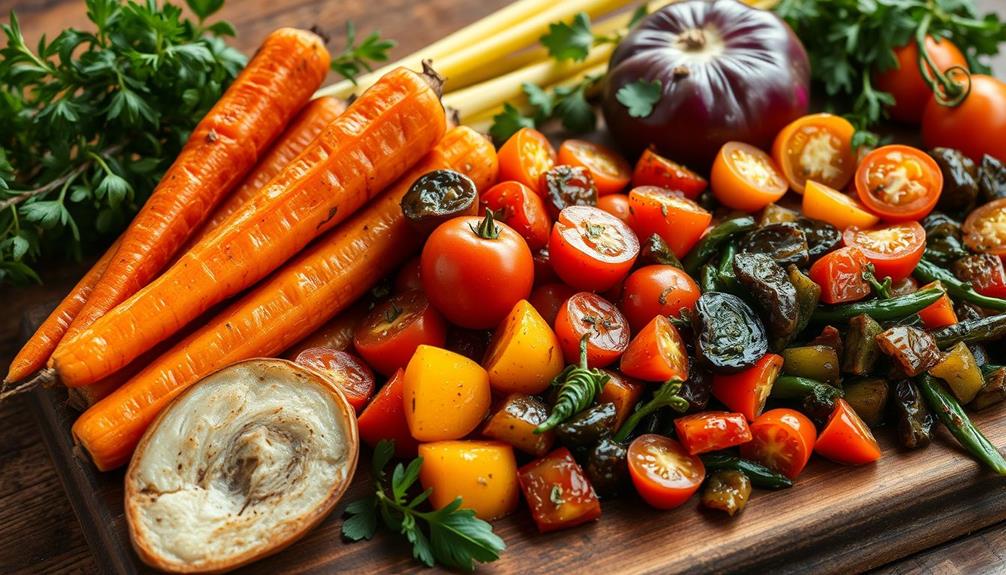
When it comes to maximizing nutritional benefits, some foods shine brightest when cooked. Cooking can greatly enhance the bioavailability of nutrients, making them easier for your body to absorb.
For instance, tomatoes packed with lycopene, a powerful antioxidant linked to cancer risk reduction, see their levels increase by about 35% when cooked. This principle of enhancing quality can also be seen in other areas, such as ensuring clean air in your home with proper air purifier maintenance which optimizes your living environment.
Carrots are another great example; cooking them boosts beta-carotene levels by 30%, which is essential for vitamin A production. Similarly, when you cook mushrooms, you improve the absorption of potassium and the antioxidant ergothioneine, making them more beneficial than when eaten raw.
Legumes, like kidney beans, must be cooked to eliminate toxins such as phytohaemagglutinin, making them safe to eat and easier to digest.
Even asparagus benefits from cooking, as it enhances the availability of its antioxidants.
Incorporating these cooked foods into your diet can provide a wealth of nutrients and health benefits that raw forms simply can't match. Embrace cooking as a method to reveal the full potential of what you eat!
Frequently Asked Questions
Is Raw Food Healthier Than Cooked Food?
When considering whether raw food's healthier, you should weigh nutrient retention against bioavailability. Some nutrients thrive raw, while others become more accessible through cooking. A balanced diet with both options often offers the best health benefits.
Is the Raw Food Diet Backed by Science?
Like a double-edged sword, the raw food diet has scientific backing, showcasing benefits like higher nutrient retention. However, it also carries risks from pathogens and may not always enhance nutrient absorption. Balance is key for ideal health.
Which Foods Are Better Raw or Cooked?
When you consider whether foods are better raw or cooked, think about their nutrient profiles. For instance, raw broccoli boosts sulforaphane, while cooked tomatoes enhance lycopene, showing that both forms have unique benefits worth exploring.
Is Meat More Nutritious, Raw or Cooked?
You can't judge a book by its cover. When it comes to meat, cooking enhances safety and digestibility, while raw meat may retain some nutrients. Ultimately, cooked meat's benefits often outweigh the potential advantages of raw.
Conclusion
In the grand debate of raw versus cooked, the truth lies somewhere in the middle. Just like the tortoise and the hare, both have their strengths and weaknesses. Raw foods offer vibrant nutrients, while cooking can enhance flavors and digestibility. Embracing a balance between the two can be your golden ticket to ideal health. So, whether you're munching on fresh veggies or savoring a hearty stew, remember that variety is the spice of life!


